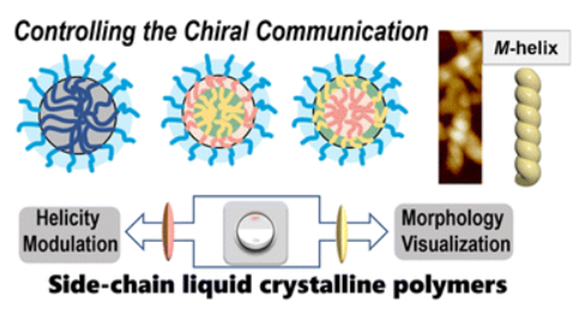Conformationally supramolecular chirality prevails over configurational point chirality in side-chain liquid crystalline polymers
Xiaoxiao Cheng a, Yijing Gan a, Gong Zhang a, Qingping Song*b(宋庆平), Zhengbiao Zhang *a(张正彪) and Wei Zhang *ab(张伟)
a State and Local Joint Engineering Laboratory for Novel Functional Polymeric Materials, Jiangsu Engineering Laboratory of Novel Functional Polymeric Materials, Suzhou Key Laboratory of Macromolecular Design and Precision Synthesis, College of Chemistry, Chemical Engineering and Materials Science, Soochow University, Suzhou, 215123, P. R. China.
b School of Chemical and Environmental Engineering, Anhui Polytechnic University, Wuhu, 241000, P. R. China.
Chem. Sci., 2023, 14, 5116--5124
In nature, the communication of primary amino acids in the polypeptides influences molecular-level packing, supramolecular chirality, and the resulting protein structures. In chiral side-chain liquid crystalline polymers (SCLCPs), however, the hierarchical chiral communication between supramolecular mesogens is still determined by the parent chiral source due to the intermolecular interactions. Herein, we present a novel strategy to enable the tunable chiral-to-chiral communication in azobenzene (Azo) SCLCPs, in which the chiroptical properties are not dominated by the configurational point chirality but by the conformationally supramolecular chirality that emerged. The communication of dyads biases supramolecular chirality with multiple packing preference, thereby overruling the configurational chirality of the stereocenter. The chiral communication mechanism between the side-chain mesogens is revealed through the systematic study of the chiral arrangement at the molecular level, including mesomorphic properties, stacking modes, chiroptical dynamics and further morphological dimensions.

链接://pubs.rsc.org/en/content/articlelanding/2023/SC/D3SC00975K